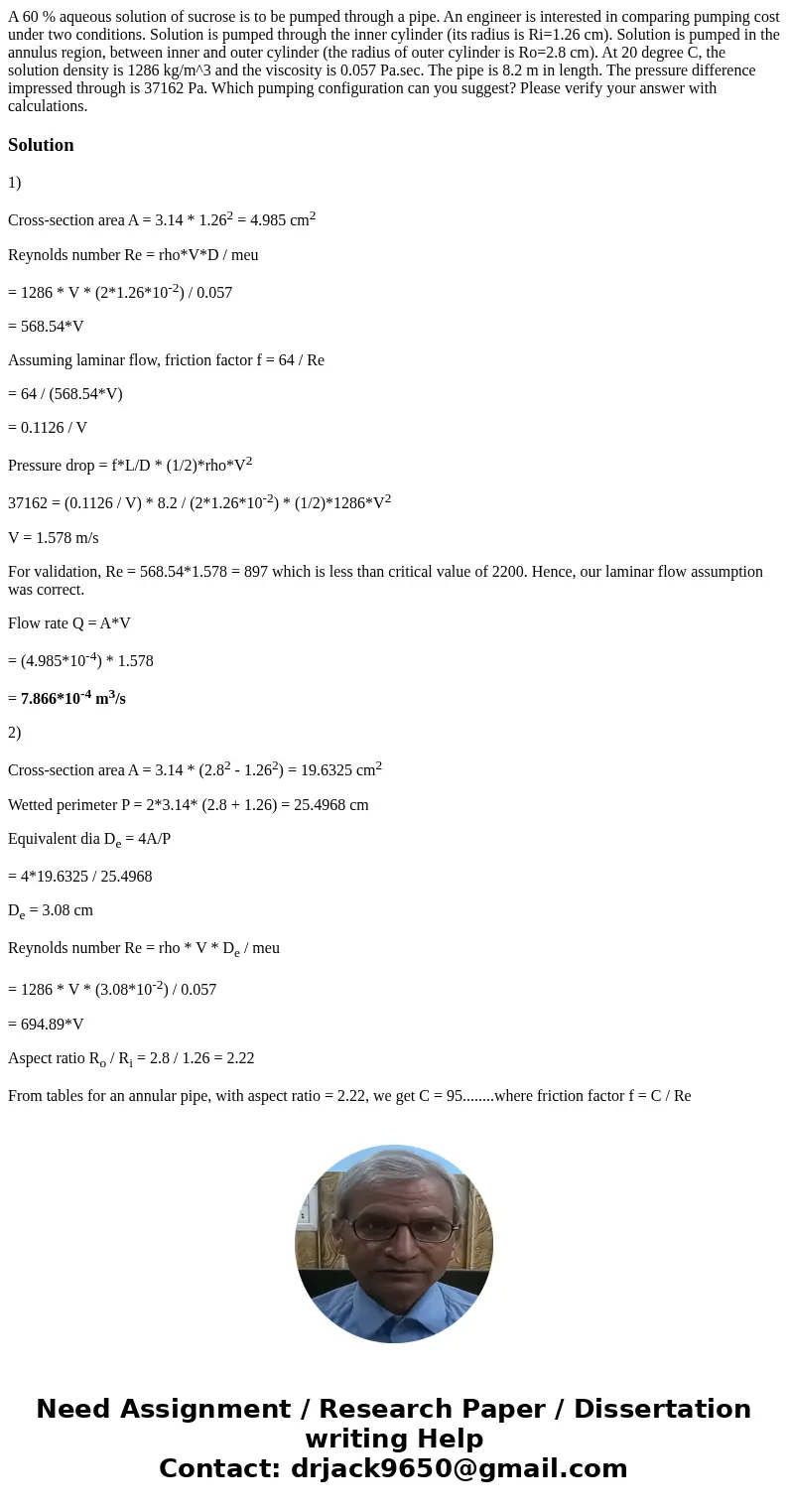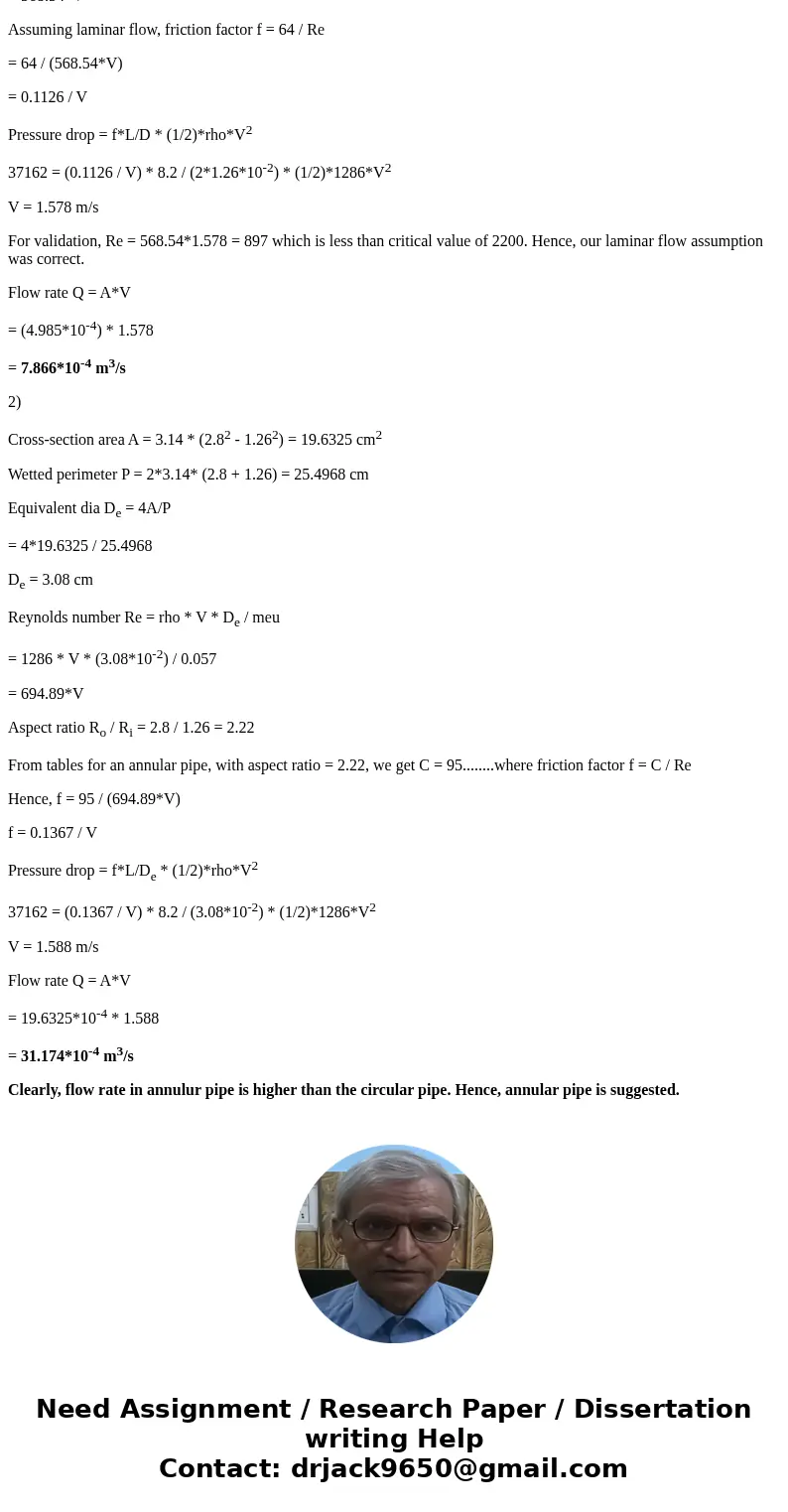A 60 aqueous solution of sucrose is to be pumped through a
Solution
1)
Cross-section area A = 3.14 * 1.262 = 4.985 cm2
Reynolds number Re = rho*V*D / meu
= 1286 * V * (2*1.26*10-2) / 0.057
= 568.54*V
Assuming laminar flow, friction factor f = 64 / Re
= 64 / (568.54*V)
= 0.1126 / V
Pressure drop = f*L/D * (1/2)*rho*V2
37162 = (0.1126 / V) * 8.2 / (2*1.26*10-2) * (1/2)*1286*V2
V = 1.578 m/s
For validation, Re = 568.54*1.578 = 897 which is less than critical value of 2200. Hence, our laminar flow assumption was correct.
Flow rate Q = A*V
= (4.985*10-4) * 1.578
= 7.866*10-4 m3/s
2)
Cross-section area A = 3.14 * (2.82 - 1.262) = 19.6325 cm2
Wetted perimeter P = 2*3.14* (2.8 + 1.26) = 25.4968 cm
Equivalent dia De = 4A/P
= 4*19.6325 / 25.4968
De = 3.08 cm
Reynolds number Re = rho * V * De / meu
= 1286 * V * (3.08*10-2) / 0.057
= 694.89*V
Aspect ratio Ro / Ri = 2.8 / 1.26 = 2.22
From tables for an annular pipe, with aspect ratio = 2.22, we get C = 95........where friction factor f = C / Re
Hence, f = 95 / (694.89*V)
f = 0.1367 / V
Pressure drop = f*L/De * (1/2)*rho*V2
37162 = (0.1367 / V) * 8.2 / (3.08*10-2) * (1/2)*1286*V2
V = 1.588 m/s
Flow rate Q = A*V
= 19.6325*10-4 * 1.588
= 31.174*10-4 m3/s
Clearly, flow rate in annulur pipe is higher than the circular pipe. Hence, annular pipe is suggested.


 Homework Sourse
Homework Sourse